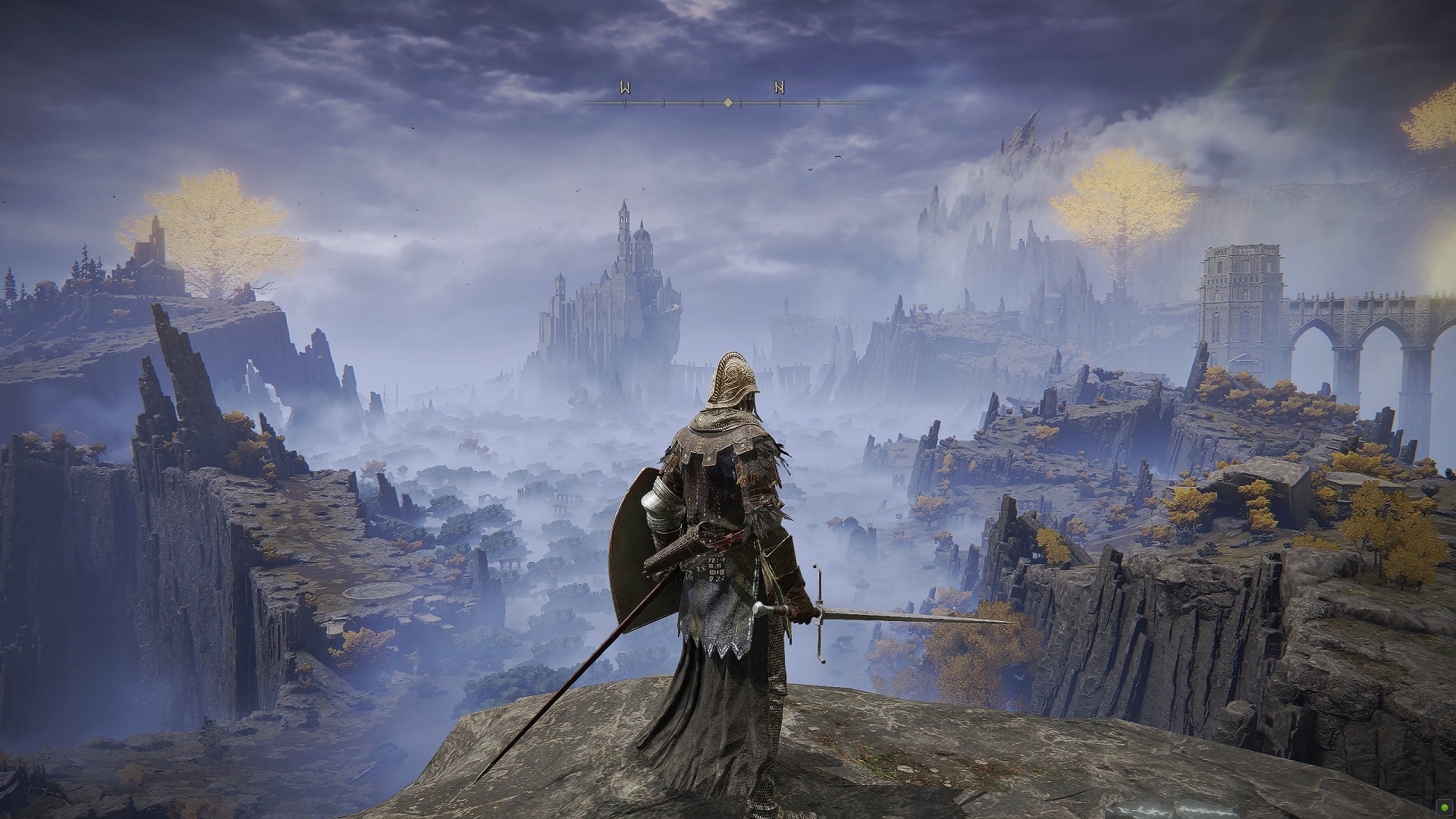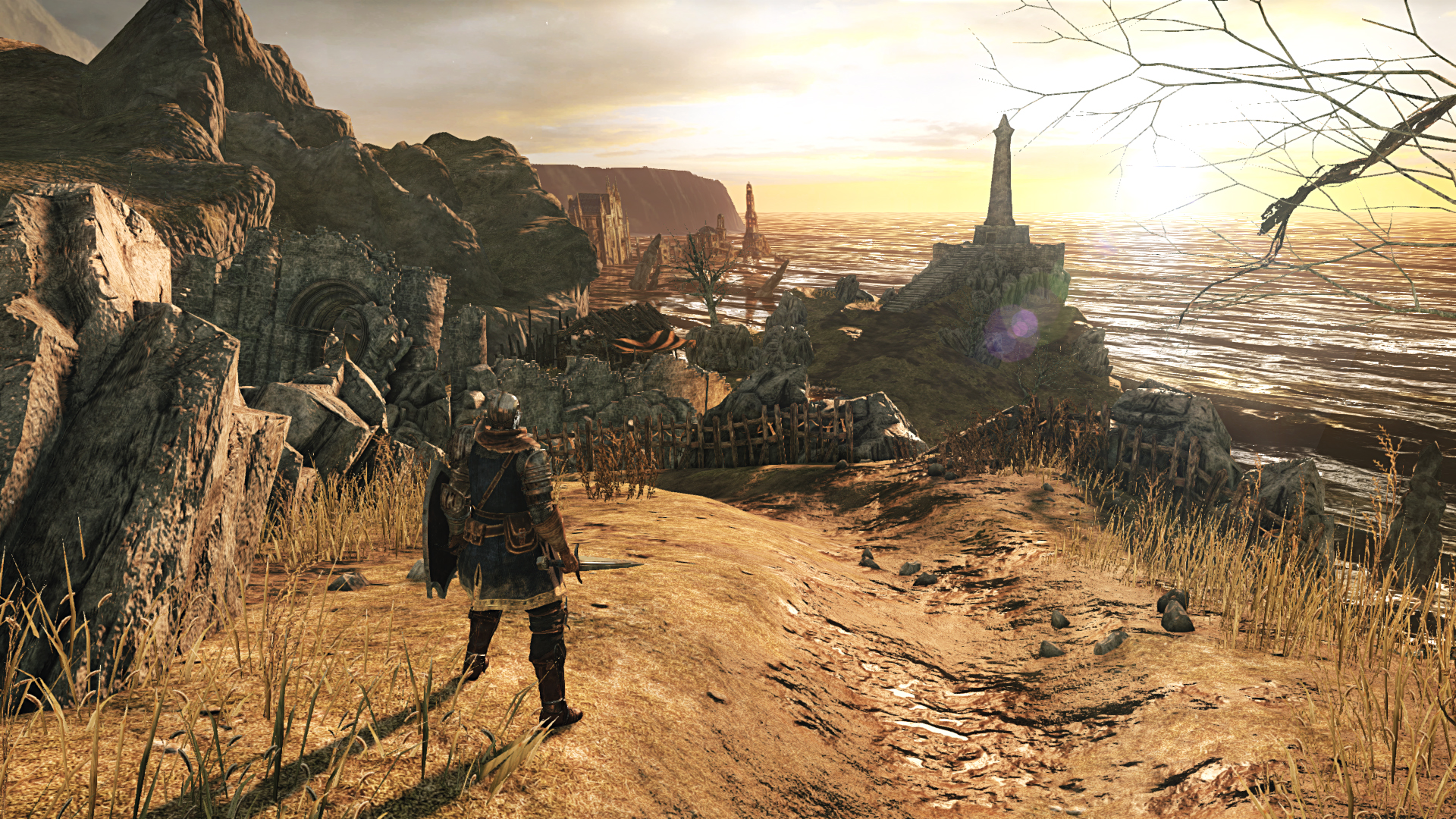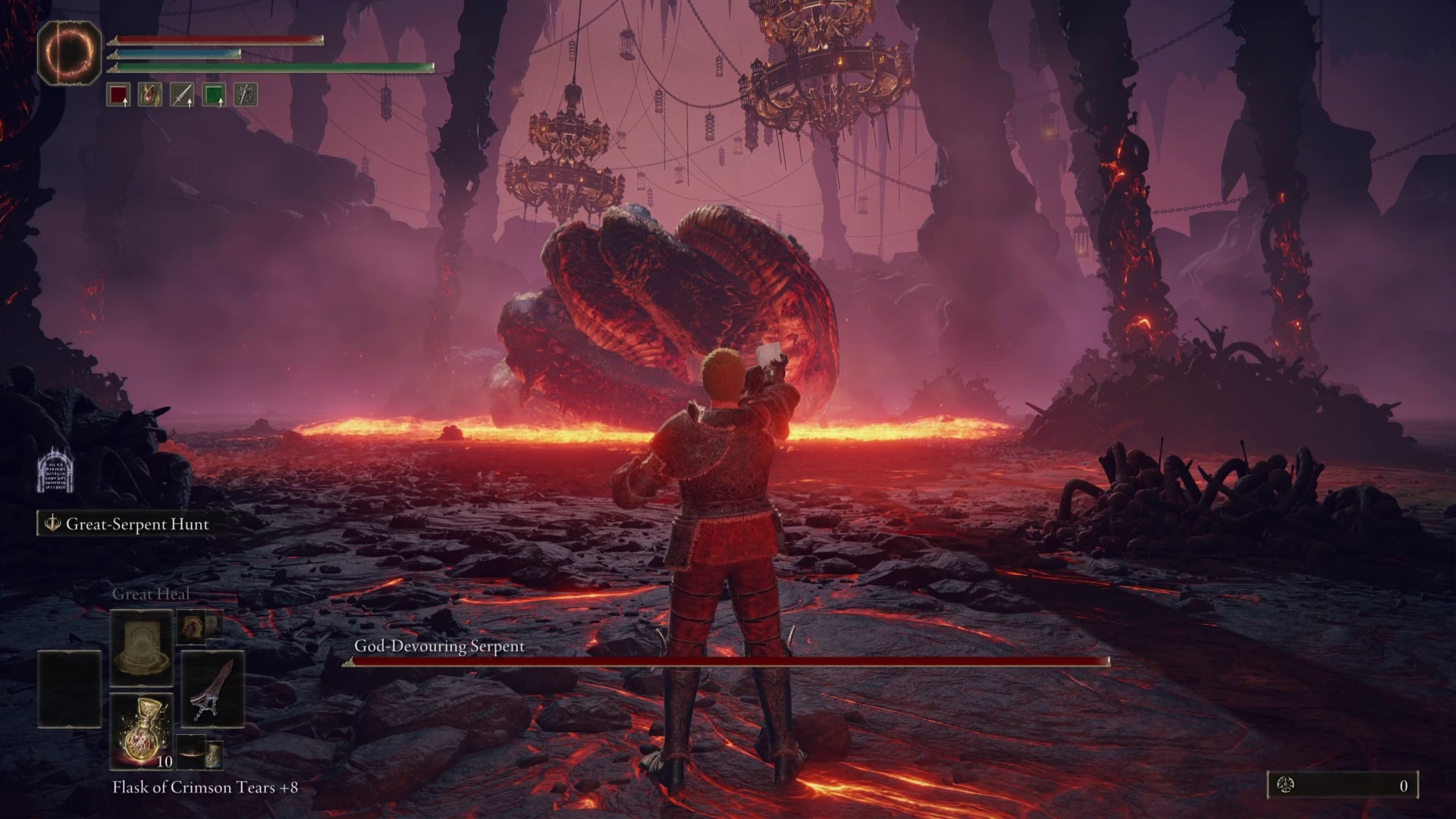Elden Ring's most absurd locations have helped me appreciate Dark Souls 2's most divisive feature
After 300 hours in the Lands Between, perhaps Dark Souls 2's Drangleic wasn't as far off as we thought

How would you pack for an open-top bus tour in Elden Ring? I remember taking one in London many years ago, just as the seasons were changing. It was t-shirt weather during the day, but once the sun dipped below the buildings it was bloody freezing. I spent the rest of the hour-long journey with my arms tucked inside my top, shivering until I reached the stop closest to my hotel. I should have known better – to call British weather temperamental is surely an understatement. Less than 15 minutes on the road in Elden Ring, however, and you can experience blistering sun, torrential rain, gale force winds, snowy blizzards, and whatever the hell is going on in the blood-red skies hanging over Caelid's toxic swamps. Good luck packing for that trip.
Since the game's launch last year, the Lands Between has been heralded as a wonder of world-building, one of the most sophisticated and expansive sandboxes we've ever seen, and, to quote our Elden Ring review, a landscape that's "palpably full of life, giving it an optimistic energy no Soulsborne game has had so far." It's a matter of opinion, but when we think of level design standards in the wider pre-Elden Ring Soulsborne series, Dark Souls often sits atop the pyramid, with Bloodborne a close second, Sekiro likely in third, and Demon's Souls – a game now pushing 14 years of age – second-to-last. At the foot of that table, more often than not, sits Dark Souls 2.
I've certainly said it myself: Dark Souls 2 is a great game trapped inside a map that makes no sense. You climb mountains to reach floating, lava-filled valleys; distances between areas don't line up as they appear on the horizon; key locations are plain missing when viewed from the world's highest vantage points; weather shifts dramatically at the opposite end of short tunnels – it's all a bit of a jumbled mess. Compared to Dark Souls' masterful use of vertical interconnectedness, Dark Souls 2's horizontal sprawl can feel flat in more ways than one. And yet, this same use of parallel, incongruous world design is one of Elden Ring's greatest joys. So much so that after 300+ hours roving the Lands Between, I'm now convinced Dark Souls 2 might not have been as far off the money as I once thought.
On the road


After 250 hours with Elden Ring, I now fully appreciate the masterpiece of Dark Souls
As you may know, Dark Souls 2 is said to have endured a rough development cycle behind the scenes. Despite the success of Demon's Souls and the first Dark Souls game, FromSoftware director Hidetaka Miyazaki opted not to take the reins on Dark Souls 2 – instead focusing his attention on the then upcoming PS4 exclusive Bloodborne. Tomohiro Shibuya and Yui Tanimura steered the project instead, but are said to have had conflicting visions of how Drangleic and the story told within should unfold. These differences ultimately led to Shibuya parting ways with Tanimura midway through development, which in turn, so the story goes, saw the dev team piecing Dark Souls 2's world together by layering rough, unfinished assets and backdrops onto its polished and pretty ones in order to meet the game's deadline.
The result was the cobbled mess that released to widespread commercial and critical success, suggesting the core of Dark Souls 2 was so good it didn't matter that its map didn't match the deft coherence posed by its forerunner. Still, players quickly began filling forums with gripes about jarring transitions and nonsensical level design shortly after launch – a point accentuated by the fact fast travel was available from the outset, stilting the sense of tangible progression for some. I'm torn on that particular point myself, but the fact that you can take an elevator inside a hilltop windmill in a place named 'Earthen Peak', and somehow wind up in a towering medieval castle inside a volcano that's somehow not visible from ground level blows my mind a wee bit.
The thing is, while Dark Souls deserves every plaudit it has received for its seemingly seamless interconnected world over the years, one of the main reasons its locations are stacked on top of one another in the first place is due to technical constraints. First launched on the PS3 in 2011, the game's desire to eschew loading screens means each location is loaded around the player – using a clever sleight of hand that goes unnoticed while moving upwards towards the summit of Sen's Fortress, and downwards towards the bowels of Blighttown alike.
In doing so, Dark Souls gives the illusion of being an open-world game when it's not; which is something Dark Souls 2's flatter, more spread-out layout struggles to mask. In practice, this is why Dark Souls 2's areas don't always seem to fit together, why the march between areas feels shorter than it ought to be, and why it's at all possible to take an elevator at the top of a bloody mountain and wind up inside a castle perched on top of a volcano.
Weekly digests, tales from the communities you love, and more
Elden right

"Hamstrung by the technology constraints of the time, Drangleic feels more jarring than the others, sure, but I'd now argue it's closer to the Lands Between than anything else in FromSoftware's back catalog."
But what about Elden Ring? If anything, its overworld design proves there's merit in incongruity. Castles lead to magic colleges that are adjacent to active volcanoes that border toxic swamps that all stand beneath a towering, hulking semi-sentient tree. Portals whisk you to previously inaccessible areas, the road to Roundtable Hold is a total conundrum, and I'm not sure how you even begin to explain Crumbling Farum Azula. There's no snow or frost in the Lyndell Capital despite being beneath a freezing mountain. There's no soot or smoke in Gelmir despite being next to an active volcano. And even if an even more drastic shift in location is required – screw it, throw an ancient elevator in there and a load screen and be done with it. Suddenly Dark Souls 2's windmill fire castles don't seem nearly as far-fetched.
And so, I guess the point of all of this is underscoring the fact Elden Ring has allowed FromSoftware and Hidetaka Miyizaki – in this instance with the help of Game of Thrones' George R.R. Martin – to be as creative as they've ever been. Demon's Souls' map was gated by the Nexus, and therefore hardly flowed at all. Dark Souls was masterful in making its world seem bigger than it really was. Bloodborne was so consumed by the supernatural in the end that flow became irrelevant. Dark Souls 3 was the love child of Bloodborne and the first Dark Souls. Sekiro doffed its kasa to history-inspired fantasy. And Dark Souls 2, for all the criticism levied at its map design at launch, was, actually, more adventurous, more daring, and more willing to experiment for the sake of variety than I ever realized. Hamstrung by the technology constraints of the time, Drangleic feels more jarring than the others, sure, but I'd now argue it's closer to the Lands Between than anything else in FromSoftware's back catalog.
So much so, that I think a full replay of Dark Souls 2: Scholar of the First Sin might be on the cards for me. The question is: how do I pack for such an unpredictable journey?
If you fancy more games like Elden Ring you should hit this link

Joe Donnelly is a sports editor from Glasgow and former features editor at GamesRadar+. A mental health advocate, Joe has written about video games and mental health for The Guardian, New Statesman, VICE, PC Gamer and many more, and believes the interactive nature of video games makes them uniquely placed to educate and inform. His book Checkpoint considers the complex intersections of video games and mental health, and was shortlisted for Scotland's National Book of the Year for non-fiction in 2021. As familiar with the streets of Los Santos as he is the west of Scotland, Joe can often be found living his best and worst lives in GTA Online and its PC role-playing scene.


